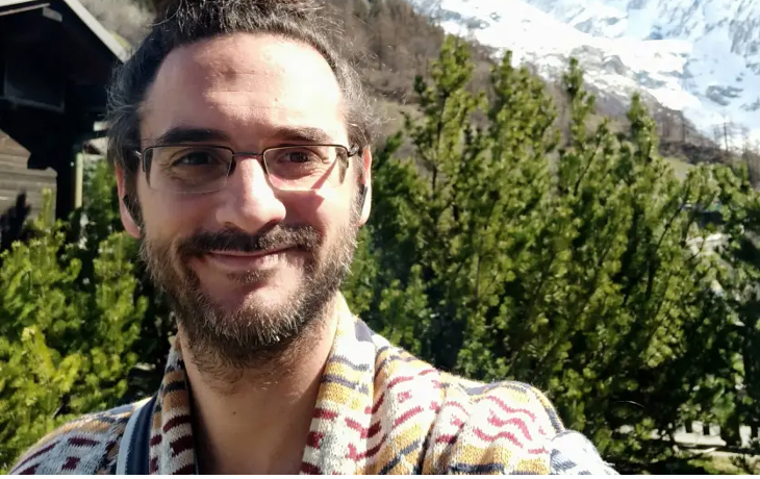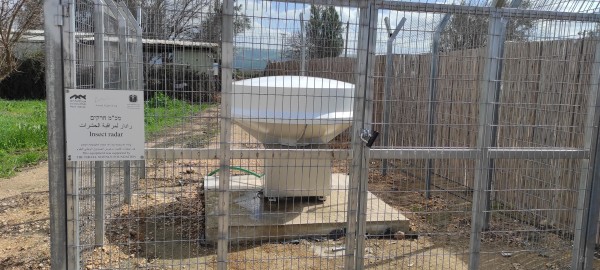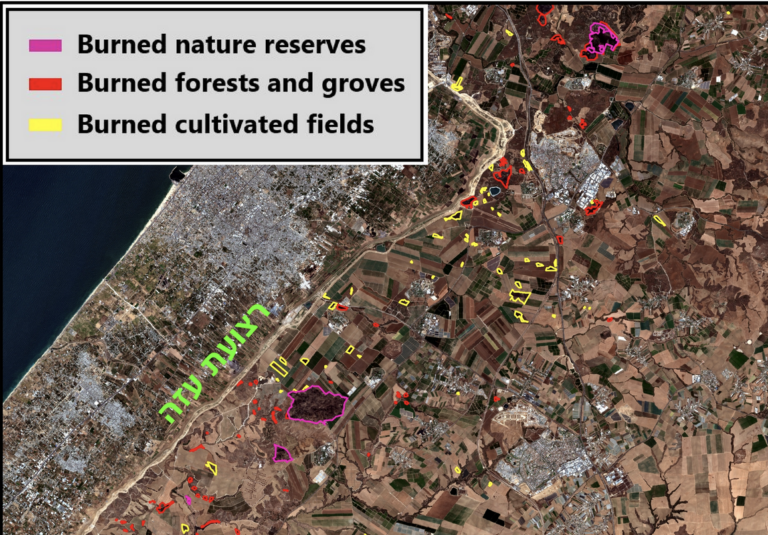Femmes et sciences, Israël : Le Dr Gross (Weizmann) montre l’utilisation répétée du feu il y a 300 000 ans

[:fr]Selon la plupart des estimations, l’être humain a découvert le feu il y a plus d’un million d’années. Mais quand l’homme a-t-il réellement commencé à maîtriser le feu et à l’utiliser pour ses besoins quotidiens ? La réponse à cette question, essentielle pour comprendre le développement de la culture humaine, est encore sujette à discussion. Un groupe de chercheurs israéliens a récemment découvert dans la grotte de Qesem, site archéologique situé près de la ville actuelle de Rosh-Ha’ayin, le témoignage le plus ancien (datant d’il y a environ 300 000 ans) d’un foyer qui, on le voit clairement, a été allumé régulièrement à cet endroit durant une longue période. Non seulement ces découvertes aident à trouver une réponse à notre question, mais de plus elles suggèrent que ces hommes préhistoriques avaient déjà une structure sociale évoluée et des capacités intellectuelles.
Les fouilles de la grotte de Qesem ont commencé en l’an 2000. Le groupe qui mène cette recherche est dirigé par les professeurs Avi Gopher et Ran Barkai, de l’université de Tel-Aviv. La docteur Ruth Shahack-Gross, du centre Kimmel de Science archéologique de l’Institut Weizmann, qui y participe depuis le début, recueille des échantillons trouvés sur place afin de les analyser dans son laboratoire.
La docteur Shahack-Gross, spécialiste de l’identification de matériaux archéologiques, a identifié un épais dépôt de cendre de bois au milieu de la grotte. En utilisant la spectroscopie infrarouge, elle a réussi, avec ses collaborateurs, à montrer qu’à la cendre étaient mêlés des résidus d’os et de la terre, qui avaient été chauffés jusqu’à de très hautes températures. Ceci est une preuve irréfutable que cet endroit a été le site d’un grand foyer.
La docteur Shahack-Gross a aussi testé la micromorphologie de la cendre. Pour cela, elle a extrait de ce foyer un petit cube de sédiment qu’elle a durci dans son laboratoire. Elle l’a ensuite coupé en tranches si fines qu’elle a pu les mettre sous le microscope pour observer la composition exacte des matériaux composant le dépôt et découvrir comment ils s’étaient formés. Cette méthode lui a permis de distinguer un grand nombre de microstrates dans la cendre, preuve que le foyer avait été utilisé régulièrement pendant très longtemps.
A l’intérieur de ce foyer et aux alentours, les archéologues ont trouvé un grand nombre d’outils en silex ayant clairement servi à découper la viande. En revanche les outils en silex trouvés à quelques mètres de là ont une forme différente montrant qu’ils étaient destinés à d’autres usages. Dans cette zone et dans ses environs, il y avait une grande quantité d’os animaux brûlés, prouvant aussi qu’on y faisait régulièrement des feux pour la cuisson de la viande. La docteur Shahack-Gross et ses collègues ont montré que cette organisation d’activités « ménagères » dans différentes parties de la grotte indique une organisation de l’espace, et donc une forme d’ordre social, typique de l’homme moderne. Ceci suggère que la grotte était une sorte de camp de base où les humains de la préhistoire revenaient régulièrement. Elle ajoute : « Ces découvertes nous aident à déterminer quand a eu lieu un tournant important dans le développement de la culture humaine, le moment où l’être humain a commencé à utiliser régulièrement le feu à la fois pour la cuisson de la viande et comme une sorte de feu de camp pour les rencontres sociales. Nous avons ainsi appris quelque chose sur l’impressionnant niveau du développement social et cognitif des êtres humains il y a environ 300 000 ans. » Selon les chercheurs, ces découvertes, ajoutées à d’autres, sont des signes de changements importants du comportement humain et de la biologie humaine, qui ont commencé avec l’apparition dans la région de nouvelles formes de culture, et en fait d’une nouvelle espèce humaine, il y a environ 400 000 ans.
Ces résultats ont été publiés dans le Journal of Archaeological Science.[:en]Humans, by most estimates, discovered fire over a million years ago. But when did they really begin to control fire and use it for their daily needs? That question – one which is central to the subject of the rise of human culture – is still hotly debated. A team of Israeli scientists recently discovered in the Qesem Cave, an archaeological site near present-day Rosh Ha’ayin, the earliest evidence – dating to around 300,000 years ago – of unequivocal repeated fire building over a continuous period. These findings not only help answer the question, they hint that those prehistoric humans already had a highly advanced social structure and intellectual capacity.
Excavations in Qesem Cave have been ongoing since 2000. The team is headed by Profs. Avi Gopher and Ran Barkai of Tel Aviv University. Dr. Ruth Shahack-Gross of the Kimmel Center for Archeological Science at the Weizmann Institute has been involved in this archaeological research since excavations began, and she collects samples on-site for later detailed analysis in the lab. Shahack-Gross, whose expertise is in the identification of archaeological materials, identified a thick deposit of wood ash in the center of the cave. Using infrared spectroscopy, she and her colleagues were able to determine that mixed in with the ash were bits of bone and soil that had been heated to very high temperatures. This was conclusive proof that the area had been the site of a large hearth.
Next, Shahack-Gross tested the micro-morphology of the ash. To do this, she extracted a cubic chunk of sediment from the hearth and hardened it in the lab. Then she sliced it into extremely thin slices – so thin they could be placed under a microscope to observe the exact composition of the materials in the deposit and reveal how they were formed. With this method, she was able to distinguish a great many micro-strata in the ash – evidence for a hearth that was used repeatedly over time.
Around the hearth area, as well as inside it, the archaeologists found large numbers of flint tools that were clearly used for cutting meat. In contrast, the flint tools found just a few meters away had a different shape, designed for other activities. Also in and around the area were large numbers of burnt animal bones – further evidence for repeated fire use for cooking meat. Shahack-Gross and her colleagues have shown that this organization of various “household” activities into different parts of the cave points to an organization of space – and a thus kind of social order – that is typical of modern humans. This suggests that the cave was a sort of base camp that prehistoric humans returned to again and again. “These findings help us to fix an important turning point in the development of human culture – that in which humans first began to regularly use fire both for cooking meat and as a focal point – a sort of campfire – for social gatherings,” she says. “They also tell us something about the impressive levels of social and cognitive development of humans living some 300,000 years ago.” The researchers think that these findings, along with others, are signs of substantial changes in human behavior and biology that commenced with the appearance in the region of new forms of culture – and indeed a new human species – about 400,000 years ago.
These findings were published in the Journal of Archaeological Science.[:]






